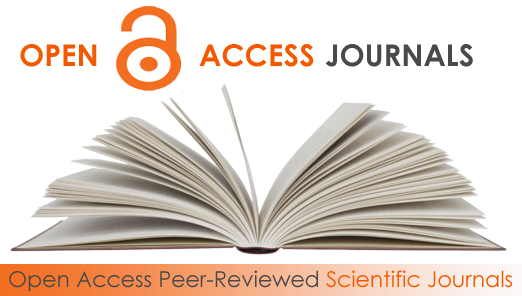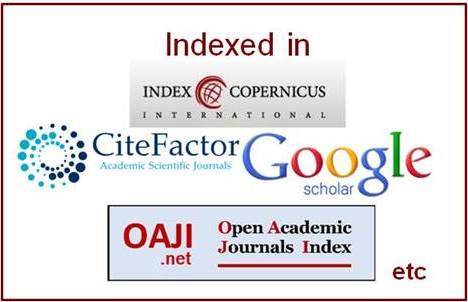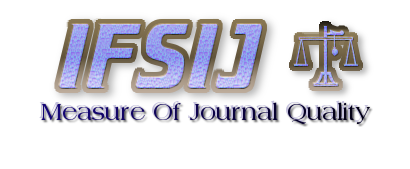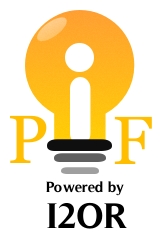MAKING SILASE OF TRASH FISH USING BACTERI ASAM LACTATE
Abstract
Indonesia is the country with the largest production of fishery products after China with a catch of almost 7 million tons in 2018, but 30-60% of its production ends up as waste. One of the alternatives to the use of fishery waste is the manufacture of fish silage. The purpose of making fish silage is to extend the shelf life and as an alternative source of protein. The method carried out is a descriptive method using literature review studies. Based on the results of the research obtained, the manufacture of silage using lactic acid bacteria can extend the shelf life of fish silage. The rate of addition of fish silage to feed ranges from 5-50% with survival results in the range of 83.33-100% and daily growth rate ranging from 1.13-5.02%, and feed efficiency ranging from 23.78-71.85%.
Downloads
References
Azizah, N., Al-Baarri, N., Mulyani, S. (2012). Effect of Fermentation Time on Alcohol Content, pH, and Gas Production on the Fermentation Process of Bioethanol from Whey with Pineapple Peel Substitution. Journal of Food Technology Applications, 1(2), 72-77.
Badrudin, B., Aisyah, A., and Ernawati, T. (2016). Abundantity of Demersal Fish Resources Stock in the Waters of the Java Sea Sub-Area. Indonesian Journal of Fisheries Research, 17(1), 11-21.
Bezerra, R. A., dan Fonseca, G. G. 2023. Microbial Count, Chemical Composition And Fatty Acid Profile of Biological Silage Obtained from Pacu and Spotted Sorubim Fish Waste Using Lactic Acid Bacteria Fermentation. Biocatalysis and Agricultural Biotechnology. 54(2023), 102929
Cotter, P. C., Hill, C., dan Ross, R. P. (2005). Bacteriocins: developing innate immunity for food. Nat. Rev. Microbiol. 3(10), 777–788.
Diamahesa, W. A., Setyono, B. D. H., Affandi, R. I., and Diniariwisan, D. (2023). Potential and Nutritional Levels of Trash Fish Landed on Ampenan Beach, West Nusa Tenggara. Journal of Fisheries, 13(4): 971-978
Elvina, W., and Utami, R. T. 2022. A Study on the Potential Utilization of Fish Scale Waste from the Sea Capture Fish Business (Case Study of the Bengkulu City Market). Manfish Journal Marine, Environment, and Fisheries, 2(3), 151-158
Erfanto, F., Hutabarat, J., and Arini, E. (2013). The Effect of Substitution of Silage of Trash Fish with Different Percentages in Artificial Feed on Feed Efficiency, Growth and Survival of Goldfish Seeds (Cyprinus carpio). Journal of Aquaculture Management and Technology, 2(2): 26-36.
Fahri, M., Raharjo, E. I., and Hasan, H. (2014). The use of tilapia innards as a source of artificial feed materials for the seeds of Biawan fish (Helostoma temminckii). Ruaya Journal, Vol. 4: 44-48
Fauzi, I. A., Mokoginta, I., and Yaniharto, D. (2008). Rearing of humpback grouper (Cromileptes altivelis) fed on pellet and trash fish in cage culture system. Jurnal Akuakultur Indonesia, 7(1), 65-70
Handajani, H. 2014. Improving the quality of fish waste silage biologically by utilizing lactic acid bacteria. GAMMA Journal, 9(2): 31-39
Hasibuan, I., Prihanani, and Puspitasari, M. (2021). Physical, Chemical, and Biological Maturity Parameters of Bokashi Fish Fertilizer. Journal of Agroqua, 19(2): 212-219
Ibrahim, A., Fridayanti, A., and Delvia F. (2015). Isolation and identification of lactic acid bacteria (BAL) from mango fruit (Mangifera indica L.). Manuntung Scientific Journal, 1(2): 159-163.
Ifa, L., Artiningsih, A., and Suhaldin, J. (2018). Making Chitosan from red snapper scales. Journal Of Chemical Process Engineering, 3(1), 47-50
Jayanti, Z. D., Herpandi, and Lestari, S. D. (2018). Utilization of Fish Waste into Silage Flour with the Addition of Hyacinth Flour (Eichhornia crassipes). Journal of Fishery Products Technology, 7(1): 86-97
Kholis, N., Mustagfirin, Purwanto, H., Khalish, Y. E. N., and Wicaksono, B. (2023). The Utilization of Trash Fish as an Alternative Ingredient in the Making of Catfish Feed. Journal of Nursing Association, 4(2): 148-156.
Kusuma, M., S., Sasanti, A., D., and Yulisman. (2017). Survival and Growth of Snakehead Fish (Channa striata) Seeds Given Different Trash Fish as Feed. Indonesian Swamp Aquaculture Journal 5(1): 13-24.
Muflih, A. (2013). Liquid Waste Treatment System for Fishery Products Industry. Samakia: Journal of Fisheries Science, 4(2): 99-104
Nafion, N., Putri, D. H., dan Irdawati, I. (2019). Optimization of Medium Fermentation for Production of Antimicrobial Compounds by Endofit Bacteria Andalas Plant (Morus macroura Miq.) BJTA-6 Isolate Bioscience, 3(1): 79-84
Rahmiati. (2017). Exploration of Lactic Acid Bacteria as Probiotic Candidates and Its Potential in Inhibiting Pathogenic Bacteria. Elkawnie: Journal of Islamic Science and Technology, 3(2): 141-150
Ramli. (2014). Effect of Lactobacillus Plantarum 1a-2 and 1bl-2 Inoculum on the Quality of Silage of Tuna Fish Waste (Thunnus atlanticus). JSAPI, 5(1): 25-30
Ratnasari, I., Maryani, and Nursiah. (2020). Addition of Catfish Offal Siage to the Growth and Survival of Catfish (Clarias sp.). Journal of River and Lake Aquaculture, 5(2): 44-49
Rimbawanto, E. A., Yusiati, L. M., Baliarti. E., and Utomo, R. (2015). The Effect of Adding Coconut Sugar Paste to Trash Fish Ensilase on the Quality of Siage. Animal Science, 13 (1): 36-45
Rostika, R. (2021). The Secret to the Success of Lobster Farming: Shrimp, Snails or Trash Fish Which Is The Most Appropriate For Lobster Feed?. [Accessed October 13, 2021]. Available on: https://fpik.unpad.ac.id/rahasia-kesuksesan-budidaya-lobster-udang-keong-atau-ikan-Trash-yang-paling-tepat-untuk-pakan-lobster/#:~:text=Sebagai%20pakan%20ikan%20yang%20relatif,lain%20yang%20kurang%20sesuai%20dengan
Safir, M., Bayan, F. F., Mangitung, S. F., Rusaini, and Rahman, S. A. (2024). Effect of Adding Silage as a By-Product of Processing Siamese Catfish (Pangasius hypopthalmus) in Feed on the Growth Performance of Vannamei Shrimp (Penaeus vannamei). JAGO TOLIS : Journal of Tolis Agrocomplex, 5(1): 33–39.
Sipayung, M. Y., Suparmi, and Dahlia. (2015). The Effect of Steaming Temperature on the Physical Chemical Properties of Trash Fishmeal. Online Journal of Students, Faculty of Fisheries and Marine Sciences, University of Riau, 2(1): 1-13.
Sofia, A., Nugroho, B. E. L., Maulana, M. A., Silviawati, P. A., Ramadhan, S., and Sari, Y. (2021). Application of Biotechnology in the Manufacture of Trash Fish Silage Through Lactic Acid Bacterial Fermentation. Journal of Aquaculture, 5(1): 10-16.
Tobigo, D. T., Mangitung, S. F., Serdiati, N., and Safir, M. (2022). Effect of Adding Silage of Catfish Offal (Pangasius hypophthalmus) in Low Protein Feed on Tilapia (Oreochromis niloticus) Growth. Journal of Mariculture, 4(2): 26-34
Wahidah, S., Idris, A.P.S., and Nawawi. (2018). Study on the Utilization of Lactic Acid Bacteria in the Manufacture of Trash Fish Silago. Agrocomplex, 17(2): 18-23.
Wirama, I. G. A. G. B., Ramona, Y., and Arisanti, C. I. S. (2015). Lactobacillus sp. Sumbawa Horse Milk Isolate Against Low pH and Deoxycholic Acid and Its Ability to Transform Colic Acid into Deoxycholic Acid. Journal of Biology, 19(1): 1-5
Author(s) and co-author(s) jointly and severally represent and warrant that the Article is original with the author(s) and does not infringe any copyright or violate any other right of any third parties, and that the Article has not been published elsewhere. Author(s) agree to the terms that the GPH Journal will have the full right to remove the published article on any misconduct found in the published article.

























